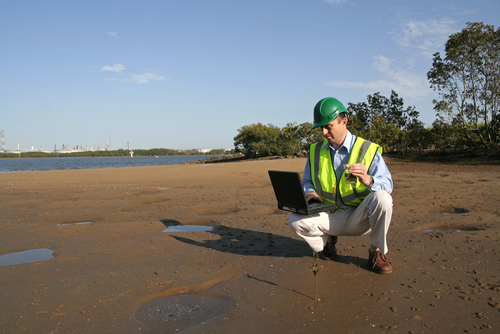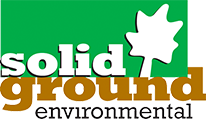
A Phase II Environmental Site Assessment (ESA) is an investigative process used to evaluate potential environmental contamination of a property or site. This type of assessment is often initiated when a Phase I ESA indicates that there may be potential environmental contamination present at the site. Site contamination is known as a Recognized Environmental Condition, or (REC).
If a property is contaminated, it can greatly reduce its value, so getting a property evaluated is particularly important if you’re buying a property.
A Phase II ESA will provide detailed information and sampling analysis to identify the extent and severity of any contamination that may exist, as well as any cleanup requirements or further investigation recommendations. The scope of the investigation depends on the specifics of the site and could include chemical testing, soil sampling, groundwater sampling, visual inspections, and other assessments. The results from this assessment are compiled into a comprehensive report for review by interested parties.
Purpose of a Phase II Environmental Site Assessment
The purpose of a Phase II Environmental Site Assessment is to comprehensively assess the subsurface area to determine the presence or absence of petroleum products or other hazardous substances. This type of assessment is used to determine whether remediation is needed and/or if the property can be used safely. It’s an important part of the due diligence process for potential buyers in order to bring to light any potential risks associated with purchasing a property if it’s contaminated.
Identifying and Assessing Potential Contamination Sources
Identifying potential contamination sources is an important part of a Phase II Environmental Site Assessment. In order to accurately assess a site, it’s necessary to identify any potential sources of contamination that could have been responsible for polluting the site. Potential sources of contamination can include underground storage tanks, industrial activities, hazardous waste sites, abandoned landfills, and more. Once these potential sources are identified, testing may be conducted in order to assess whether any contaminants have been released into the environment. Chemical testing, soil sampling, groundwater sampling, and other assessments may be necessary in order to fully assess the conditions on the property.
Evaluating Risk
Evaluating risk is an important part of a Phase II Environmental Site Assessment. The responsibility of an environmental consultant is to determine the level of acceptable contamination for a given site, and the degree to which human health or environmental exposures to contaminants are considered acceptable. Risk tolerances are usually established by regulatory agencies and should be taken into account when assessing environmental conditions at a site.
Environmental professionals must assess contamination levels for each contaminant present at a site, and consider any potential risks posed by those contaminants in order to accurately determine whether action is needed to clean up the site. By evaluating contamination levels, environmental consultants can ensure that any contamination present does not pose an unacceptable threat to human health or the environment, allowing the relevant party to take appropriate steps to protect public safety and the environment.
Identifying Property Sellers’ Liability
If you’re selling a property, an essential part of a Phase II Environmental Site Assessment is to know what your liabilities are. If the property being sold has been exposed to potential environmental contamination, the seller could be held liable for any damages that occur as a result, regardless of who was at fault for contaminating the property. Therefore, it is important to identify any liabilities associated with the property and determine whether the property seller has adequate protection in place. This can include collecting documents related to past or present contaminant releases, identifying appropriate liability insurance coverage and other protective measures, and determining if additional measures are necessary. By ensuring that the seller has proper liability protections in place, environmental professionals can help protect them from future claims or legal action related to contamination on the property.
Conducting a Phase II Environmental Site Assessment
Conducting a Phase II Environmental Site Assessment is an important step in protecting property buyers and sellers from potential liabilities associated with contamination on the property. It involves gathering information about past and present contaminant releases, as well as assessing any remaining risks that may exist. During this process, environmental professionals review documents related to past or present contaminants, identify any appropriate liability insurance coverage and other protective measures, and determine if additional measures are necessary.
Additionally, experts will carry out sampling and analysis of soil, water, air quality, and other environmental conditions at the site to assess current levels of contamination in accordance with the ASTM E1903-11 Standard Guide. This detailed assessment helps to determine the extent of existing contamination and any further steps required to protect both buyer and seller from future claims or legal action related to contamination on the property.
Subsurface Investigations
Subsurface investigations are a key component of any environmental site assessment. They involve an in-depth review of the subsurface materials to identify current and potential sources of contamination, as well as to assess the extent of existing contamination. Through the use of soil borings, samplings, and analysis of groundwater, surface water, and sediment, subsurface investigations can help determine the presence or absence of contaminants within the subsurface environment. Some of the methods used by scientists and geologists to drill into the site for testing include CPT drilling, hand augering, hollow stem augering, use of mud rotaries, and push probing.
Phase II ESAs may reveal further information regarding potential pathways by which contaminants can migrate off-site. Subsurface investigations are essential for providing a comprehensive understanding of how contaminants may have impacted the property and what steps should be taken to ensure protection from potential liabilities associated with such contamination.
Frequently Asked Questions
What’s the Difference Between a Phase I and Phase II Environmental Site Assessment?
A Phase I Environmental Site Assessment is a preliminary investigation to determine the likelihood of hazardous substances being present at a particular site. It involves reviewing historical records to uncover any potential past activities of a hazardous nature, as well as conducting visual inspections of both the immediate site and adjacent properties. Interviews with prior owners, operators, occupants and local government officials will also be conducted in order to collect further information. If there is any evidence that hazardous substances may be present at or near a subsurface level, or if Recognized Environmental Conditions (RECs) are discovered, then a Phase II Assessment is necessary.
The Phase II Environmental Site Assessment moves beyond visual analysis and verbal exchanges and is specifically designed to properly gauge the full extent of the contamination problem. This involves collecting physical samples from both on-site soil, groundwater, and building materials and from nearby off-site areas for testing in laboratories. In addition to sampling material for chemical analysis, drilling operations may also have to be performed in order to detect pollutants at deeper levels. The results of the test will provide an accurate picture of whether subsurface issues need appropriate correction or remedial action.
What Triggers a Phase II Environmental Site Assessment?
A Phase II Environmental Site Assessment (ESA) is necessary when the presence of hazardous substances, contamination, or Recognized Environment Conditions (RECs) are found during the completion of a Phase I ESA. It is especially important to complete this assessment if there is significant reason to believe there may be hazardous contaminants on site.
How Long Does a Phase 2 ESA Take?
Completing a Phase 2 ESA is an important part of any commercial real estate transaction if a Phase I ESA uncovers any contamination on a site. This process, however, can take a bit of time to complete. The majority of the duration of a Phase 2 ESA is allocated to collecting samples from the property being purchased. After the samples are collected and analyzed, it typically takes around seven days for the results to come back. Finally, a report is drawn up based on those results, which usually takes around one week. All in all, you should typically expect that a Phase 2 ESA will take approximately four weeks.
It’s important to keep in mind throughout this process that any additional steps or delays may add extra time to the completion of your Phase 2 ESA. Factors such as weather conditions or difficult terrain can cause delays with sampling. Overall, though, it’s not uncommon for such an assessment to take around four weeks from start to finish and it is worth considering these factors when setting expectations for timing during any real estate transaction process involving a Phase 2 ESA.
Who Pays For A Phase 2 ESA?
A Phase 2 Environmental Assessment is important to any commercial or residential development. This assessment helps ensure that all potential environmental hazards are identified and remediated before construction begins. Who pays for the assessment will vary depending on the circumstances. The current owner of a site will usually be responsible for covering all costs related to the assessment.
If you’re in the process of buying a site from the current owner, then they may agree to split the costs with you, or have it deducted from your closing costs. However, this should always be discussed beforehand so that both parties are clear on who is paying what upfront. In addition, the Phase 2 Environmental Assessment provides an important baseline of information which can help head off litigation and other issues down the line by ensuring that all potential hazards have been inspected and dealt with as necessary.
Expert Phase II Environmental Site Assessments
We offer expert Phase II Environmental Site Assessments to ensure that all potential environmental hazards are identified and remediated before any development begins. Our experienced team of consultants specializes in environmental investigations and advisement, providing you with the highest quality assessments possible. We utilize cutting-edge tools to provide precise measurements, giving us accurate data quickly and cost-effectively to ensure that you know exactly what you’re getting into before making a major investment.
We understand the importance of these assessments for the safety of your project and for those who will be using the site in the future, which is why we meticulously inspect every detail throughout the entire process. From gathering samples to analyzing results and drawing up reports, we take every step of our Phase II Environmental Site Assessments seriously. With our help, you can rest assured knowing that your property is safe and ready to use. Contact us today to learn more about our services or to get started with your own assessment.
